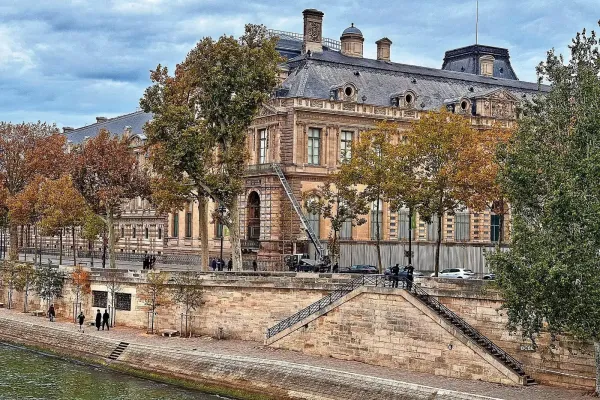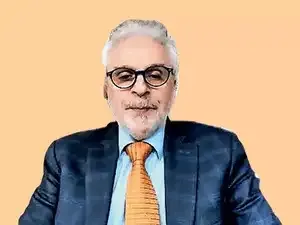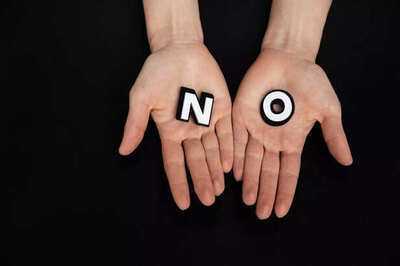Nikos Passas is Professor of Criminology and Criminal Justice at Northeastern University. He tells Srijana Mitra Das about art crimes — and ebbing punishment:
Q. How do you analyse the recent Louvre event?
A. The group involved used very low-tech devices to defeat a much more sophisticated surveillance system. They parked outside the museum, right by the river, in an open area at 9:30 AM. During broad daylight and in visiting hours, with people present, they smashed the glass, took everything in around seven minutes and disappeared on e-bikes. There was no extraordinary technology to pull this off. The fact that they could get in and get away, despite whatever surveillance measures and alarms were there, is remarkable.
Q. Who forms such criminal groups?
A. The visible hand were the people who got in, picked up the items and ran — but there could be invisible perpetrators. It’s an open question whether there was inside information, received through connections, bribery or some complicity. Also, very identifiable items were stolen — these are of extraordinary value to some who can afford them.
Who is the possible client? Who is on the demand side of this criminal conduct? Did someone order these articles? That would suggest very different players. Official places, through which art circulates and transactions are executed, also include networks where no questions are asked. This is not a very heavily regulated sphere and personal knowledge and financial motives may allow very wealthy people to interface with these perpetrators. So, you could have perpetrators from a low- to middle-level socioeconomic strata but also some from the upper classes and some very wealthy individuals.

Q. Can this underworld economy be mapped?
A. Many of the big financial hubs are also art collecting centres, like London, Switzerland, New York, Dubai, Beijing, etc. Such places have collectors who can afford these things. The origins of such articles are often art-rich countries, whose vulnerabilities are exacerbated with conflict or a history of occupation or colonialism with illicit excavation, etc.
Importantly, the players involved range from diplomatic figures to people in art trading, state actors and sometimes, private collectors. Museums famed for their collections from Egypt, Mexico, Syria, Greece or Asia are evidence of this history — such thefts continue to this day, with only a tiny part discovered and returned to the places they were taken from. The Council of Europe has a convention dealing with this but it doesn’t have many countries participating, nor enforcement and supervision capacity.
Q. How do the financial dynamics of such transnational crimes work?
A. Art laundering happens through art collecting centres, particularly where there is significant overlap with financial centres, like Geneva, Zurich, London, Tokyo, Hong Kong, Dubai, etc. Big money moves through, avoiding investigative trails by using mechanisms like real estate, derivatives, imports and exports, cryptocurrency and trade-related money-laundering.

Q. You write on the links between globalisation, ‘criminogenic asymmetries’ and crime —please elaborate?
A. Globalisation is the growth in interdependencies in different spheres of public life. From economic to military globalisation or human mobility, this essentially means different players and diverse societies coming into closer contact than before. As diverse actors and systems come into play, the asymmetries or the substantial differences between them have criminogenic effects — they create opportunities for misconduct and motives for people to take advantage of these. For example, one country has tough sanctions on capital controls and tax evasion — another has no taxes, strong provisions about privacy and nothing about capital controls. A principle for international cooperation between law enforcement and judicial authorities in different countries is that they should have symmetric systems which can communicate, alongside provisions in one country mirroring another nation. When these are asymmetric, international cooperation collapses — and you can do in other places what you are not allowed to do at home. This can be apropos the environment, pollution, financial transactions, labour laws, etc. This sets the ground for what I term ‘lawful but awful practices’, crimes without legal violations — you commit what would be a crime in your jurisdiction in a place where that law does not apply.
When globalisation brings these systems together, these asymmetries acquire a criminogenic potential. We need more international cooperation and stronger norms. However, we have an erosion of these, alongside increased nationalisms and ‘me-first’ approaches. That hampers effective, cooperative enforcement.
For many people, the guiding power of rules has grown weaker — that is what I call ‘global anomie’. When you don’t regard something as binding, you can violate it without losing much sleep. With little concerted deterrence, prevention is reduced and the message often is — crime pays, particularly when there are power asymmetries, with some people being more influential over the controls than others.
Views expressed are personal
Q. How do you analyse the recent Louvre event?
A. The group involved used very low-tech devices to defeat a much more sophisticated surveillance system. They parked outside the museum, right by the river, in an open area at 9:30 AM. During broad daylight and in visiting hours, with people present, they smashed the glass, took everything in around seven minutes and disappeared on e-bikes. There was no extraordinary technology to pull this off. The fact that they could get in and get away, despite whatever surveillance measures and alarms were there, is remarkable.
Q. Who forms such criminal groups?
A. The visible hand were the people who got in, picked up the items and ran — but there could be invisible perpetrators. It’s an open question whether there was inside information, received through connections, bribery or some complicity. Also, very identifiable items were stolen — these are of extraordinary value to some who can afford them.
Who is the possible client? Who is on the demand side of this criminal conduct? Did someone order these articles? That would suggest very different players. Official places, through which art circulates and transactions are executed, also include networks where no questions are asked. This is not a very heavily regulated sphere and personal knowledge and financial motives may allow very wealthy people to interface with these perpetrators. So, you could have perpetrators from a low- to middle-level socioeconomic strata but also some from the upper classes and some very wealthy individuals.

The Louvre theft of France's crown jewels, via a mechanical lift, occurred amidst public and police — it highlights issues from immigration to financial controls
Q. Can this underworld economy be mapped?
A. Many of the big financial hubs are also art collecting centres, like London, Switzerland, New York, Dubai, Beijing, etc. Such places have collectors who can afford these things. The origins of such articles are often art-rich countries, whose vulnerabilities are exacerbated with conflict or a history of occupation or colonialism with illicit excavation, etc.
Importantly, the players involved range from diplomatic figures to people in art trading, state actors and sometimes, private collectors. Museums famed for their collections from Egypt, Mexico, Syria, Greece or Asia are evidence of this history — such thefts continue to this day, with only a tiny part discovered and returned to the places they were taken from. The Council of Europe has a convention dealing with this but it doesn’t have many countries participating, nor enforcement and supervision capacity.
Q. How do the financial dynamics of such transnational crimes work?
A. Art laundering happens through art collecting centres, particularly where there is significant overlap with financial centres, like Geneva, Zurich, London, Tokyo, Hong Kong, Dubai, etc. Big money moves through, avoiding investigative trails by using mechanisms like real estate, derivatives, imports and exports, cryptocurrency and trade-related money-laundering.

Empress Eugenie's iconic tiara, now stolen
Q. You write on the links between globalisation, ‘criminogenic asymmetries’ and crime —please elaborate?
A. Globalisation is the growth in interdependencies in different spheres of public life. From economic to military globalisation or human mobility, this essentially means different players and diverse societies coming into closer contact than before. As diverse actors and systems come into play, the asymmetries or the substantial differences between them have criminogenic effects — they create opportunities for misconduct and motives for people to take advantage of these. For example, one country has tough sanctions on capital controls and tax evasion — another has no taxes, strong provisions about privacy and nothing about capital controls. A principle for international cooperation between law enforcement and judicial authorities in different countries is that they should have symmetric systems which can communicate, alongside provisions in one country mirroring another nation. When these are asymmetric, international cooperation collapses — and you can do in other places what you are not allowed to do at home. This can be apropos the environment, pollution, financial transactions, labour laws, etc. This sets the ground for what I term ‘lawful but awful practices’, crimes without legal violations — you commit what would be a crime in your jurisdiction in a place where that law does not apply.
When globalisation brings these systems together, these asymmetries acquire a criminogenic potential. We need more international cooperation and stronger norms. However, we have an erosion of these, alongside increased nationalisms and ‘me-first’ approaches. That hampers effective, cooperative enforcement.
For many people, the guiding power of rules has grown weaker — that is what I call ‘global anomie’. When you don’t regard something as binding, you can violate it without losing much sleep. With little concerted deterrence, prevention is reduced and the message often is — crime pays, particularly when there are power asymmetries, with some people being more influential over the controls than others.
Views expressed are personal








